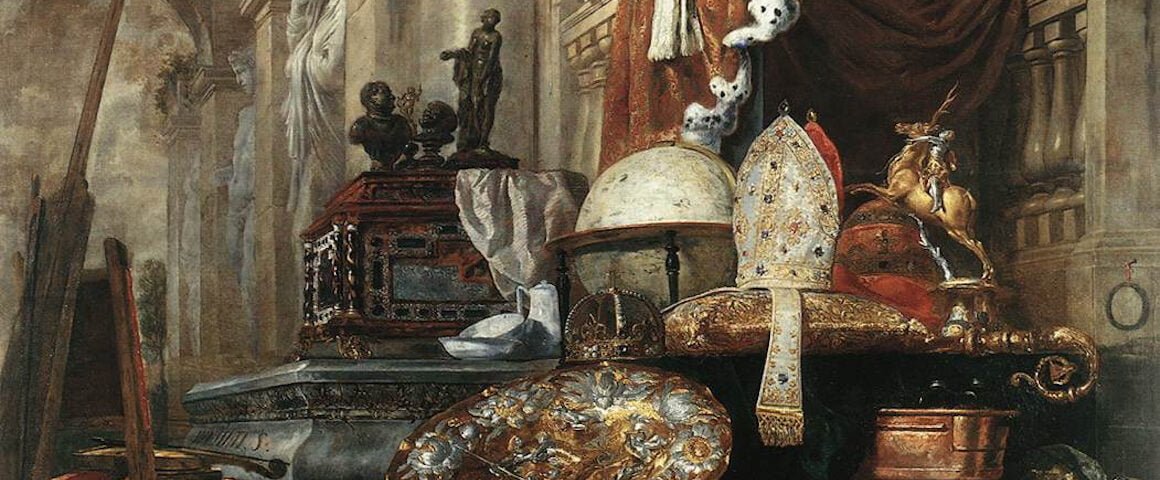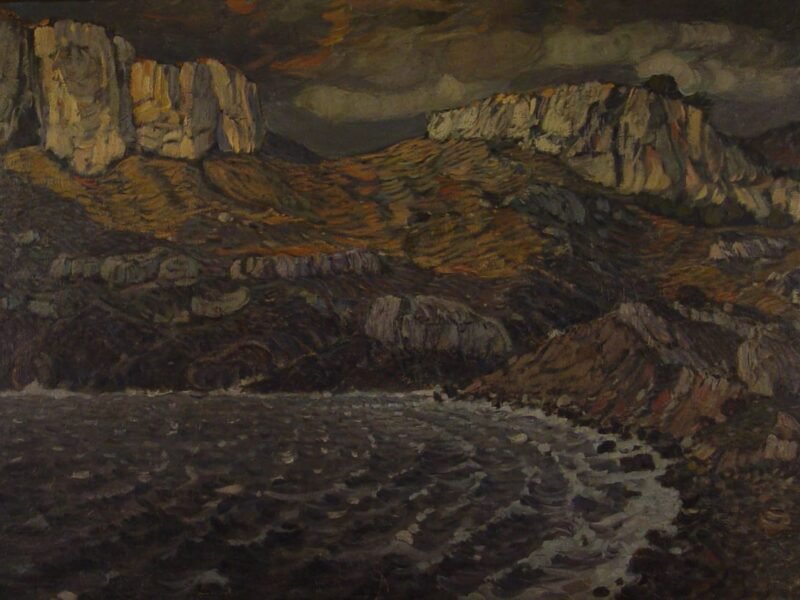As we enter Lent, the 1662 Book of Common Prayer gives us a Commination (or threatening) against sin, and some prayers to go with it. Coming before Almighty God in prayer to remember our own need for the Saviour to cleanse us, and to banish sin from our lives, is a practice that has its roots in ancient Israel’s annual Day of Atonement. Leviticus 16 tells us what the LORD said to Moses, Aaron, and all Israel after the LORD killed two of Aaron’s sons with fire for entering the Tent of Meeting with strange (unauthorized) fire and making improper offerings to the LORD. By their impure offering, they polluted the whole Tent of Meeting, where the LORD dwelt with his people, and this sin put all Israel in danger by threatening its relationship with the LORD. Israel needed, therefore, an emergency purification to restore its fellowship with the LORD, that it might continue to live. As we read Leviticus 16, we may reflect on the ways in which this rite of purification, continued yearly in the Day of Atonement, should inform how we live our own lives before God today.
Part 1: At the Tent of Meeting
The various offerings in the Day of Atonement’s complex sequence of ritual can be summarized as follows, with a bull, a ram, two goats, and another ram:
| Offering type | High priest (& family) | People of Israel |
|---|---|---|
| Sin (purification) | Bull | One goat, by lot* |
| Burnt | Ram | Ram again |
* The other goat is lonely, and made lonelier.
First, the high priest (starting with Aaron) took a bath for his body to be clean before handling the pollution of the Tent of Meeting.
Then, the high priest had to deal with two sets of sins (see also Hebrews 7.27). Ideally, the high priest was pure and spotless, foreshadowing Christ. The LORD’s sudden killing of high priest Aaron’s two sons, however, showed that this was not in fact the case, and that the high priest had to deal with the sin of the high priestly family itself. Thus, the high priest killed a bull and collected its blood to make a first purification offering for himself and all his family. Then, having killed a bull and collected its blood for himself and his whole house, the high priest did the same with a goat for the people of all Israel.
Thus, taking the blood of the bull (for his own house) and the blood of the goat (for the house of all Israel), the high priest then entered into the innermost part of the Tent of Meeting, where the LORD dwelt with his people Israel. Using the blood of the bull, he washed away the pollution that came from his own house; using the blood of the goat, he washed away the pollution that came from the people of all Israel (see also Hebrews 9.11–22). Unless the high priest cleansed the place with blood for both sets of sins, the place where the LORD dwelt with his people was defiled, too disgusting for him to stay in. Likewise, the high priest used the blood of both the bull and the goat to cleanse the other parts of the Tent of Meeting, and then to cleanse the altar that stood before the Tent of Meeting. When the Tent of Meeting was cleansed of sins, the sins of both the priest and the people, then it was no longer like a house of dung; once the altar was cleansed of sin, then it was no longer polluted with sin, and it could be used to present whole burnt offerings in the worship of God.
Before actually making whole burnt offerings to reëstablish relationship with God, the high priest had to do another thing, involving the second goat; the first goat’s blood had been used to wash away the sins of the people from the Tent of Meeting and the altar that stood before it. Because there are two goats, interchangeable and chosen by the throwing of dice, we see that the first goat and the second goat both deal with the pollution broought by the sins of all Israel. So, after a second bath, for the impurity that he was about to deal with, the high priest confessed Israel’s sins over the second goat. The goat was now unclean, because the sins of the whole people had been placed upon it, and it was sent away into the wilderness, far away from the people, to symbolically banish Israel’s sin pollution all the way to the devil Azazel.
At last, the high priest made a whole burnt offering for himself and his family, symbolically offering his whole self up to God. And then he made a whole burnt offering for the people, symbolically offering Israel’s whole self to God. In this way, God provided a way for the high priest to express the right thoughts and feelings, for the high priestly family and all Israel to rededicate themselves to God in purity.
We should note that the people did not actually watch this. Aaron’s sons had already been killed because of the impurity they brought to the Tent of Meeting. So the people stayed away because of their own, related moral impurity. What they did instead of going to the Tent of Meeting will be told below.
We need to see how holy God is, and how he cannot dwell in a Church – that is, a temple, a people constituting the temple – when it is full of sin. Sin pollutes. Sin is so disgusting that there is no way for the holy God to dwell with a people of sin. Much less is it possible for such a sinful people to bring acceptable worship to him.
Part 2: Not at the Tent of Meeting
The people, who stayed away from the Tent of Meeting, were told to fast and mourn – to afflict themselves – so that the ritual applied to them. The second goat, chosen by lot, by the throwing of dice, was led away to Azazel in the wilderness. This meant that sin itself was led away and banished to the devils. The people had to mourn and separate themselves from the sins they ritually rejected. In the New Testament, in 1 Corinthians 5, the Apostle Paul speaks of the need to excommunicate a scandalous sinner from the Church when he refuses to repent of his sin. He says to “deliver such an one unto Satan for the destruction of the flesh, that the spirit may be saved in the day of the Lord Jesus.” That is, in order to save the Church, and to keep the Holy Spirit dwelling with the Church, the faithful must deliver the unrepentant sinner to Satan, and thus separate themselves from the sin thus banished. Instead, the Church must stand on the side of the Lord, on the side of the Saviour, against all sin and impurity and wickedness.
Of course, we also hope that the sinner will repent, and the Prayer Book teaches as much (“punished in this world, that their souls might be saved in the day of the Lord”), paraphrasing 1 Corinthians 5.5 to apply it to the sinner as (one hopes) a member of the elect Church; but the most pressing necessity is for the salus populi, the safety of the Church itself. Recent events in the Church of England show it necessary to bear this priority in mind: first the keeping of the Holy Ghost for the body of the Church as a whole, lest he depart from the Church, and only then the salvation of the sinner through repentance. The sin of our brethren in England is grievous to us, and we earnestly desire that the Church of England repent of the course it has now plotted, but it is not for us to know whether England will repent or be destroyed in fire and brimstone like Sodom. What is known, however, is that the Church’s survival must be ensured, to fulfill Christ’s promise that the gates of Hell will not prevail against it. In consequence, whether England will repent or no, its sin must be cast out of the Church and sent to Azazel. If England will hold on to that sin, then England must be to us as a goat sent to Azazel. Within England, those who cling to Christ and afflict themselves are to be saved as the godly remnant of that nation, because their trust is in the blood of the Lamb to remove the sin from England’s sanctuary. Who knows? For their sake, for the sake of ten righteous in Sodom, God may turn aside his wrath and send instead a revival of faith that burns away the people’s former sins. But there is no true revival unless the faithful “shall not be ashamed to confess the faith of Christ crucified, and manfully to fight under his banner, against sin, the world, and the devil.”
Curse Sin
Therefore, we curse sin, and we affirm that God curses all who hold on to their sin. This is what the 1662 Prayer Book’s Commination service has the people do: they together affirm of a list of sins that God curses those who commit them. In affirming a curse against sin and those who commit it, we set ourselves against it, and we accept that we ourselves are cursed if we hold on to those sins. Committing together to stand and make sin our enemy remains crucial today. By uniting together with Christ instead of sin, we experience the peace of God. This is what we are called to do this year before Easter, that we may love God and put away sin from ourselves, banishing sin to Azazel and dwelling in the company of God all our days. Let us be admonished by the example of the goats sent away from Israel, that the fate of Nadab and Abihu may not come upon us, as it came upon Ananias and Sapphira, for a strange fire we think to offer to the Lord. May the merciful Father, who has compassion upon all men, and hates nothing that he hast made – who would not the death of a sinner, but that he should rather turn from his sin, and be saved – may this same Father pardon and absolve the nations baptized into his Son when they truly repent and unfeignedly believe his holy Gospel.







'Ash Wednesday and the Day of Atonement' has no comments
Be the first to comment this post!